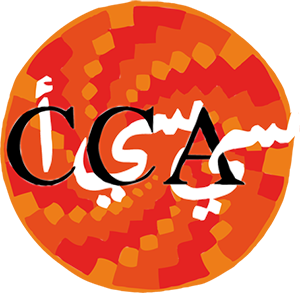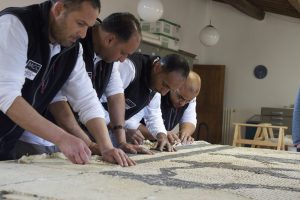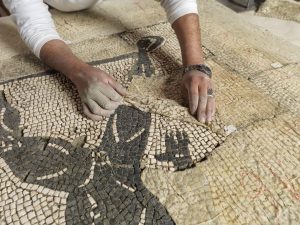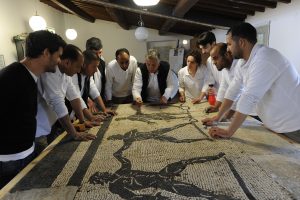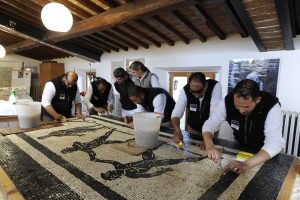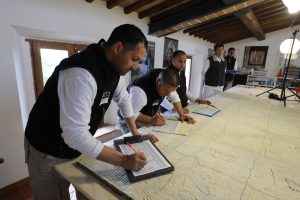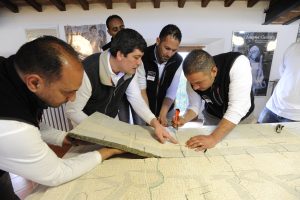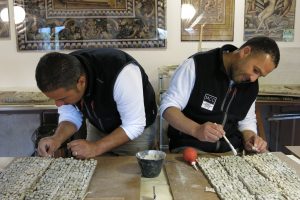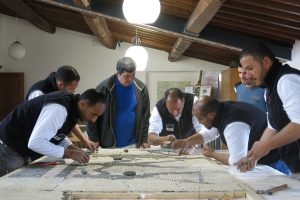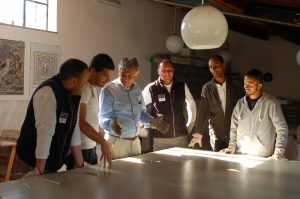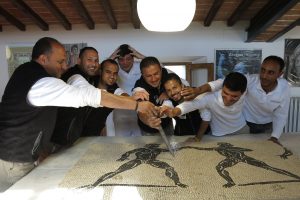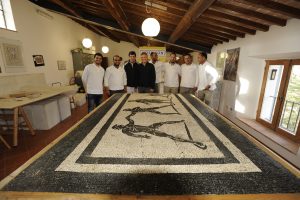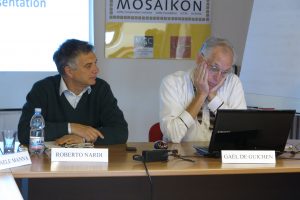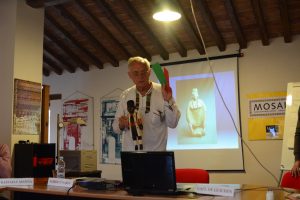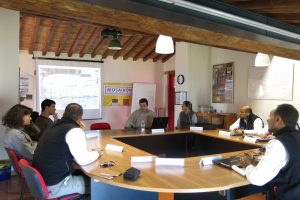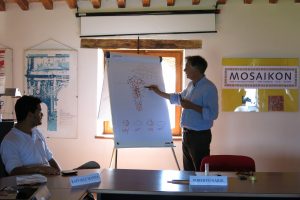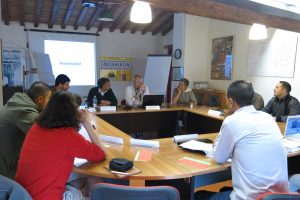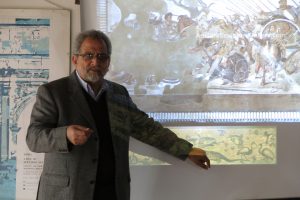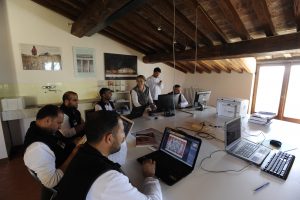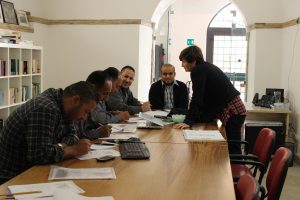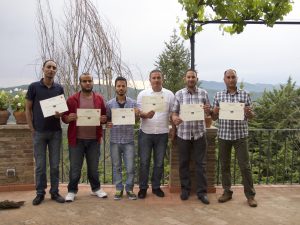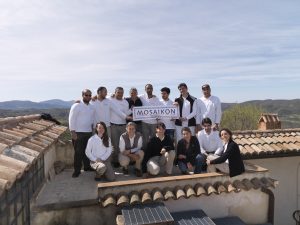Curriculum
Theoretical lectures
Theoretical lectures were delivered by CCA teachers and several international conservation experts (see “Faculty and Staff” section). A broad range of topics was covered, with the aim of introducing participants to the ethical and theoretical principles of modern conservation, with special reference to the treatment of detached mosaics.
Module 1 and 2 of MCC Libya 2014 included lectures on the following topics:
Introduction to history of mosaic conservation and to general conservation principles
- The significance of cultural heritage and the necessity of conservation
- Mosaic technology 1 and 2
- The mosaic from Hellenistic to late-antique time
- History of mosaic restoration: from detachment to in situ conservation
Materials and techniques of mosaic conservation
- Mosaic restoration techniques
- Restoration/conservation of mosaics: methodology and practice
- The aggressors of mosaic heritage: a critical review
- Lime-based mortars for conservation
Introduction to conservation management
- Graphic documentation: classification of decay patterns according to Normal standard/glossary
- Digital documentation: from the mosaic to the memory disk 1 and 2
- General principles of safety in conservation
In the context of the didactic activities of Module 2, participants worked as a group in elaborating a paper that will be submitted to the 12th Conference of the International Committee for the Conservation of Mosaics (ICCM), to be held in Sardinia (Italy) between the 27th and the 31st of October 2014.
The paper illustrates five case studies from Libya, related to archaeological sites with mosaics. It gives a critical analysis of conservation problems and possible solutions, covering the individual contributions presented by the participants in the course.
Laboratory practice
Within the framework of this course, a significant portion of time was dedicated to practical work in the CCA laboratories. The participants undertook the conservation of a Roman mosaic floor, on concession of Museo delle Terme, Rome. The black and white Pietra Papa mosaic comes from the thermal baths of a Roman villa in Via Portuense, Rome, on the bank of the river Tiber. The villa is dated to the Adrian’s period, the first half of the 2nd century A.D.
Across the two modules, participants were able to carry out the whole process of conserving the mosaic, in all its phases.
In Module 1 the initial documentation of mosaic condition was carried out, followed by removal of the facing used for detachment, and preliminary cleaning of the tesserae. The mosaic was then assembled on a temporary clay support and small lacunae were integrated.
In Module 2, the conservation of the mosaic was completed. Participants prepared a new support with aluminium honeycomb panels, on which the mosaic was mounted with lime-based mortar, and carried out the final treatments: cleaning and stuccoing.
Study visits
As part of the course, participants undertook several fieldtrips to cultural places, museums, monuments and archaeological sites in Italy.
Study visits were an opportunity to appreciate the art and history of Italy, and to widen their knowledge of Roman and Byzantine mosaics. They included the city of Naples and the unique archaeological site of Pompeii, Venice and its islands, and the mosaics of Ravenna.
In the course of several trips to Rome, trainees visited some among the most important museums and monuments of the city, such as the Colosseum and the Vatican Museums, as well as some major cultural heritage institutes: the International Centre for the Study of the Preservation and Restoration of Cultural Property (ICCROM), the Istituto Superiore per la Conservazione e il Restauro (ISCR), and the mosaic conservation laboratory of the Vatican Museums.
Language classes
During both modules, participants attended weekly English classes in a language school in Rieti, to improve their communication skills in an international context.
